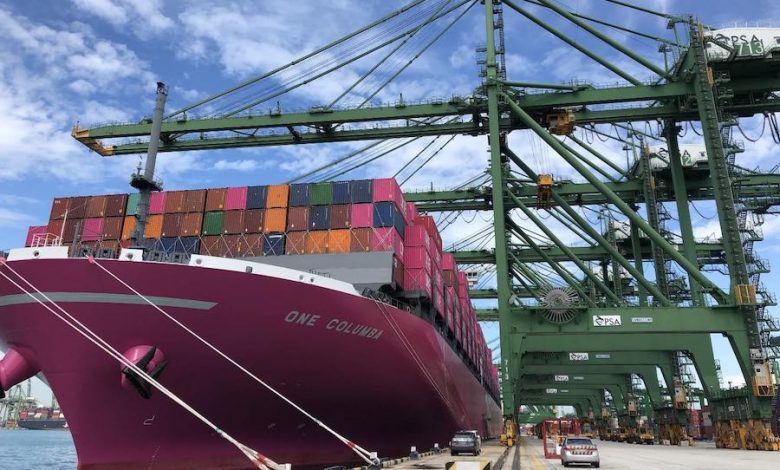
The current escalation of digitalisation and IT development has been given a new lease of life under the new normal resulting from Covid-19. Digital applications are playing an increasingly important role in help control the spread of the virus. Essentially this is being done via Covid tracing applications as well as facilitating business activity through e-commerce and blockchain.
The shipping and maritime sector has not been immune from this hive of activity. In the recent past they have been seen being left behind as other sectors in the economy move forward. It is not surprising to see a recent proliferation of reporting of maritime digital progress, whether it be through smart container or smart port developments. Importantly, there has been progress with regards port–to–port integration and communication as data / information sharing becomes the norm.
Perhaps the biggest step forward has seen the debate around and acceptance of the concept of a maritime ecosystem as opposed to the previous port ecosystem that created data silos with no commercial scalability. Significant indicators of this movement include the recently announced PSA International expansion of its digital supply chain capabilities. The initiative is a partnership with One Network Enterprises that will look at what digital tools would enable supply chain automation around order logistics to optimise supply chains. What is different is that the initiative will utilise the One Network platform to connect other supply chain players to optimise global logistics and port-based warehousing.
Essentially the aim is to enable port activities via digitisation through the development of automation and greater supply chain visibility. There appears to be a collaborative effort with the realisation that new order supply chains are increasingly based on data rather than knowledge.
It is apparent that these initiatives all strive for the holy grail of an integrated digital shipping platform. There is now an acceptance that for these platforms to work, the large gaps that have emerged, such as common digital interface standards, needs to be addressed.
However, has this been progress or merely shifting the deckchairs on the Titanic?
The key to answering this question is the context within which the debate and development is taking place. Whilst there has been a gradual acceptance that the newly emerging maritime ecosystem is connecting data streams that will seamlessly integrate port operations with shipping, it is essentially still taking place within a silo – although the scope of the silo has been expanded.
Essentially the current smart maritime ecosystem is still focused on data sharing activities within a port setting. It is largely driven by demands for optimal port operations through real time navigation, digital twinning, and automation. With the port now both a consumer and a provider of information there is an improving digital integration of data. The introduction of 5G capability has further enhanced this new ecosystem, by enabling use of multiple data streams to improve all asset situational awareness. This greater visibility optimises storage, laydown, and port equipment utilisation, in turn improving vessel turnaround times and land usage.
Whilst an important step forward, it is still largely ignoring the fundamental shift currently underway in supply chain and logistics management. Driven by e-commerce and the building of China’s Belt Road Initiative, smart supply chain requires a holistic approach to how goods and services move across borders. This includes integrating maritime and land-based transportation and logistics routes that facilitate a co-ordinated pairing of maritime/port/land transport routes.
The maritime ecosystem’s major digital weakness is that much of port automation / maritime digital development is taking place within the context of a transhipment facility i.e. large container vessels arrive, offload and smaller volumes shipped elsewhere. New supply chain under the BRI and new China-decoupled supply needs a greater focus on gateway ports i.e. how the port connects and facilitates last mile and first mile transportation issues and how to optimise these operations to reduce final product cost.
China appears to have identified these large gaps in inter-connectivity. Initially introducing its digital silk road (DSR) as a co-ordinating function of the BRI in March 2015. However not only was the of the DSR reinforced in Xi Jinping’s speech to the BRI forum in 2019, it was extended beyond simply rolling out fibre optic cable, network equipment, technology and facilitating software in the form of 5G networks. It is now being set within the context of a ‘whole of transport ecosystem’ that will use 5G capability to co-ordinate all transport corridors, including the port. It looks to integrate, and share data required to better plan and optimise logistics along entire supply chains, whether it be by land, water, or air. The plan is that by 2025 there will be fully digitally integrated movement of goods and services along the BRI trade network.
This suggests that China is ahead of the digital smart people curve. It also suggests that western based initiatives are merely moving the deckchairs. However, Covid-19 does offer an opportunity as there is an increasing reluctance by nations to sign up to Huawei 5G based technology systems that have been used to upgrade the BRI into a multimodal and multi-dimensional supply chain and logistics ecosystem. The smart port of tomorrow that wants to integrate into the new supply chain dynamic will need an integrated and seamless technology base that will reduce total cost of the supply chain through optimal asset utilisation, lower inventory costs through efficient cargo management and visibility of the entire value chain from manufacture to end user.
Integrating these platforms that can communicate with Chinese systems will make for the smart port of the future.
splash247




0 Comments